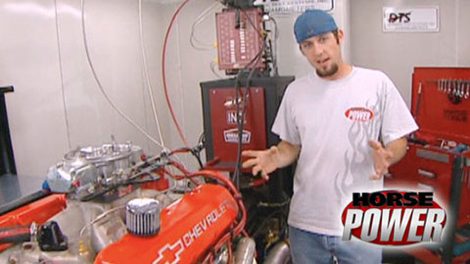
Engine Dyno Testing - Cam Swap Test Results
It's a major milestone! Mike and Joe introduce their all new DTS engine dyno and state-of-the-art INC test cell. Then they break it in testing a small block Chevy cam swap. Also, a trip to the annual Hot Rod Reunion.
Season 10
Episode 16
Hosts: Joe Elmore, Mike Galley
First Air Date: September 23, 2006
Duration: 17 minutes 49 seconds




























